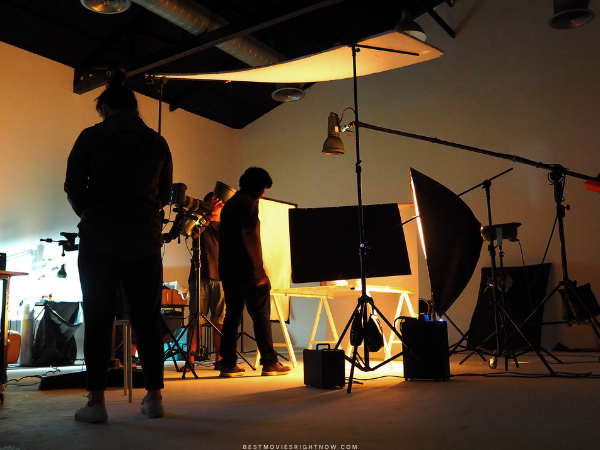Everyone loves movies. Whether it’s a lighthearted romantic comedy, creepy thriller, or adrenaline-pumping action film, there’s something for everyone.

Commonly, no matter the genre, you’re bound to see special effects. Here are some of the most common types of special effects used in movies to know before your next movie night.
What are special effects?
An illusion created for movies and television by props, camerawork, computer graphics, etc.
Here are the Most Common Types of Special Effects Used in Movies.
Most Common Types of Special Effects Used in Movies
CGI
Computer-generated imagery, also known as CGI, is one of the most widely used techniques to deliver computer-generated images. Although images can be two-dimensional, CGI commonly includes three-dimensional computer graphics to create characters, scenery, or special effects in film and television.
Stop Motion
Stop-motion animation refers to still objects that appear to move on their own. Filmmakers physically move objects in small increments through individually photographed frames to produce a moving effect when spliced together. Clay animation, puppets, and plasticine figures are some of the most common items used for stop-motion features.
Motion Control
Motion control is another one of the most common types of special effects used in movies. It involves motion control systems to form an open or closed loop through various commands until the desired motion is achieved. Motion control photography requires various elements of same-camera motion to finalize a single image.
Green Screen
Green screens have drastically evolved since their inception in the early 1900s. A green screen is a chroma-key composition visual effect in which images or videos layer together to insert background footage while the foreground footage remains transparent.
Although bluescreens exit, green is the common color for TV and film given its neutral backdrop for foreground characters in darker clothes.

Live Special Effects
Lastly, live special effects or practical effects are a type of special effects produced without computer production. Springler rigs, pyrotechnics, make-up, prosthetics, and weather are some examples of practical effects that don’t require computer imagery. Traditionally, live special effects were the common option prior to computerized mechanics and CGI.
Whether working in film, television, or digital media, visual storytelling requires a vision.
If you want to work in the film industry, especially as a director of photography (DP), you should know about famous cinematographers.
For young creatives, college is a great way to learn your craft while making the connections necessary to survive in such cut-throat industries. If you’re getting ready to head off to film school, take a look at these tips for first-year film students.
Technology and the film industry go hand-in-hand. After all, cameras and editing systems are forms of technology themselves.
If you enjoyed this list, I have a monthly membership for parents and educators that want to teach or supplement lessons with shows and movies.

“I absolutely love sharing movies with my kids as a way to teach them valuable lessons. It's like this awesome bonding experience where we all snuggle up on the couch with some popcorn, and I get to see their little faces light up with curiosity. Whether it's a classic with timeless morals or a new animated flick with hidden gems of wisdom, it's a fantastic way to impart important life lessons in a fun and engaging way. Plus, the post-movie discussions are priceless – hearing their take on the characters and the story adds a whole new dimension to our family time.” –a Homeschooling parent
With Homeschooling with Shows and Movies membership, you will get resources every month, including:
- List of This Month’s Suggested Themes
- List of Monthly Observances
- List Of Movies for Unit Study
- Unit Study Resource
- Seasonal Activities (minimum of three)
- (BONUSES) Resources for you, the teacher
These resources are worth it if you'd like to easily incorporate shows and movies into your homeschooling.
Related Posts:
- The Top Movies That Used 3D Printing Effects
- Movies That Revolutionized the Standard for Visual Effects
- Most Ridiculous Depictions of Technology in Movies
- The History of Audio Recording and Reproduction
- How to Hone Your Personal Filmmaking Style
- Different Ways Technology Is Used in Filmmaking
- What To Consider Before You Start Shooting a Film
- The Top Film Cinematographers You Should Know
- 4 Science-Fiction Movies That Feature Gardening

- What To Bring to Set as a Production Assistant - April 2, 2024
- Top 5 Iconic Jewelry Moments in Film History - March 22, 2024
- Unique and Classy Ways To Have a Disney-Themed Wedding - March 11, 2024
